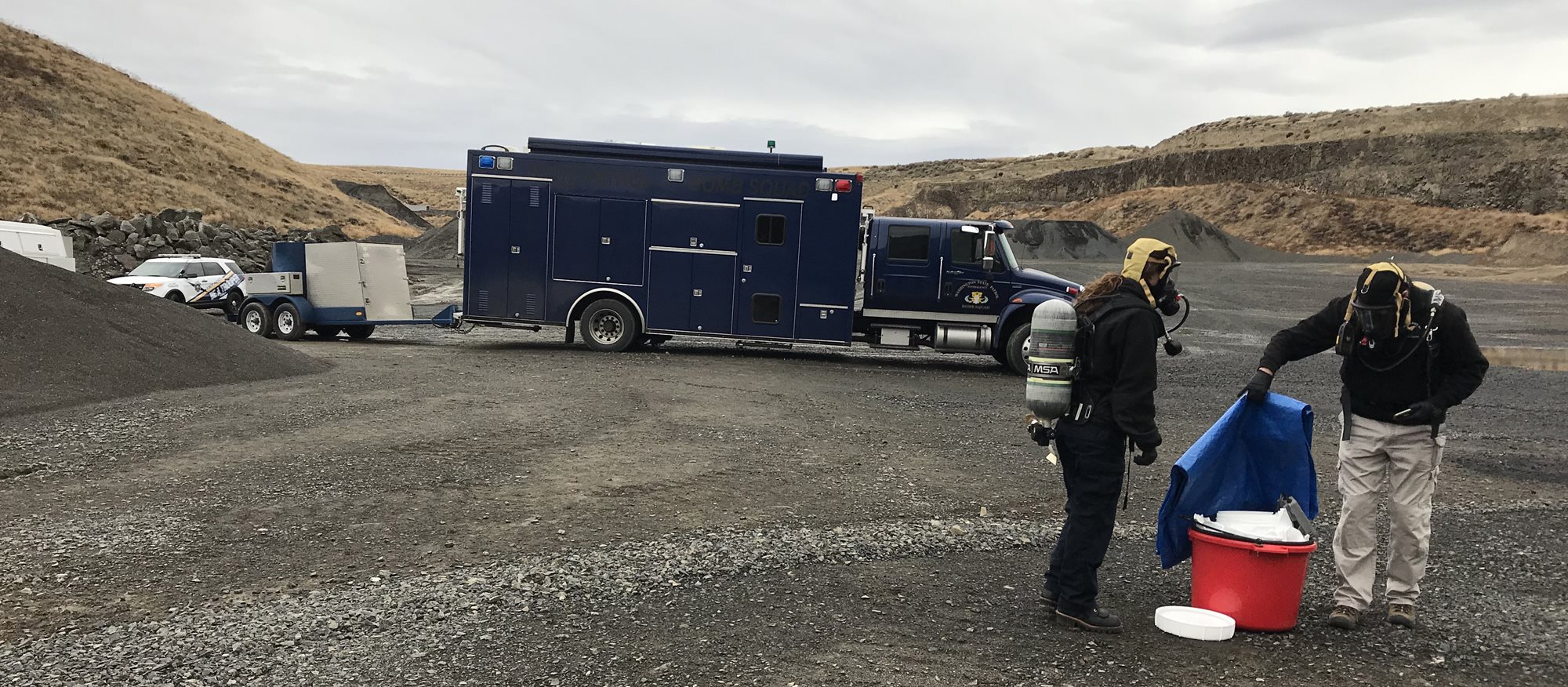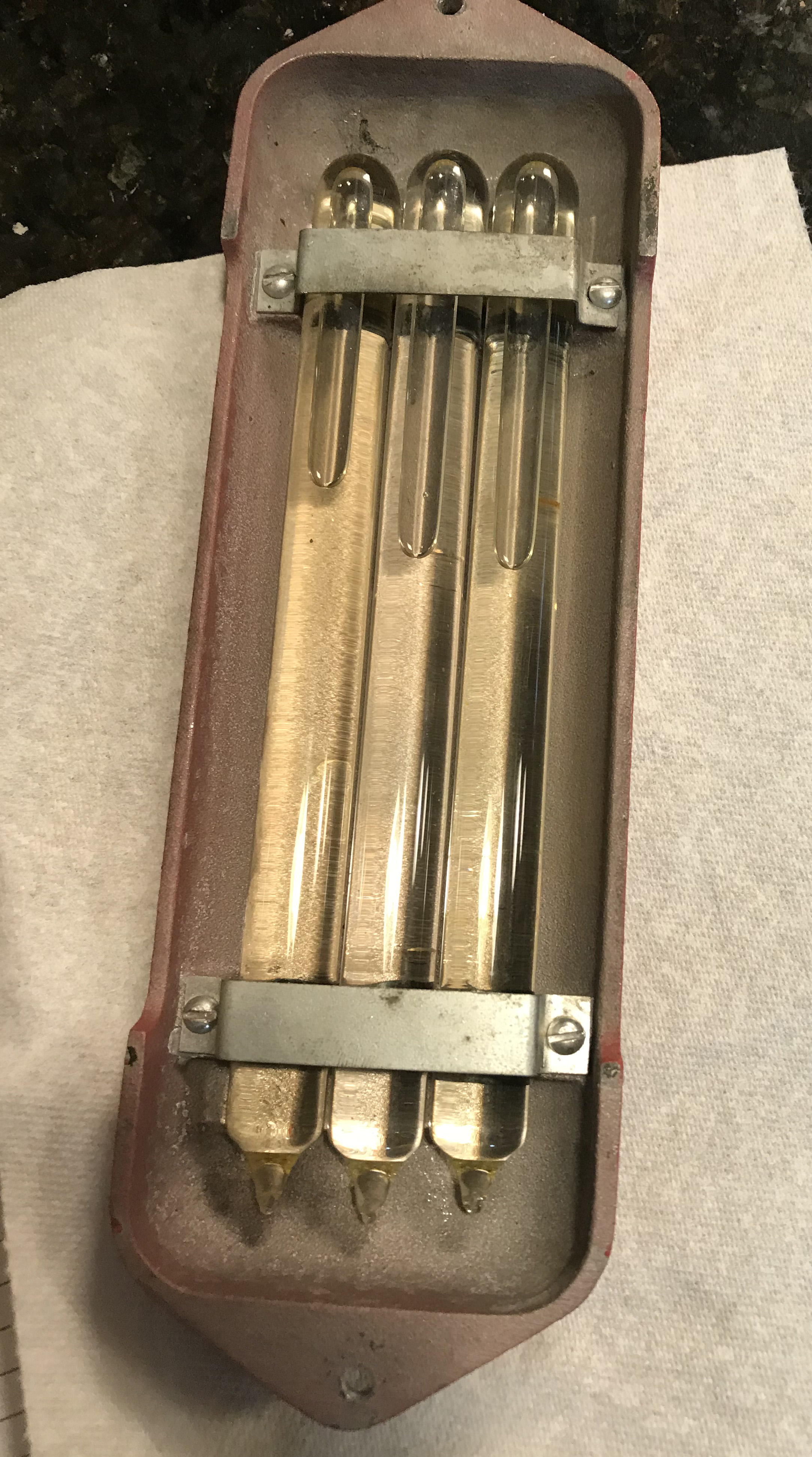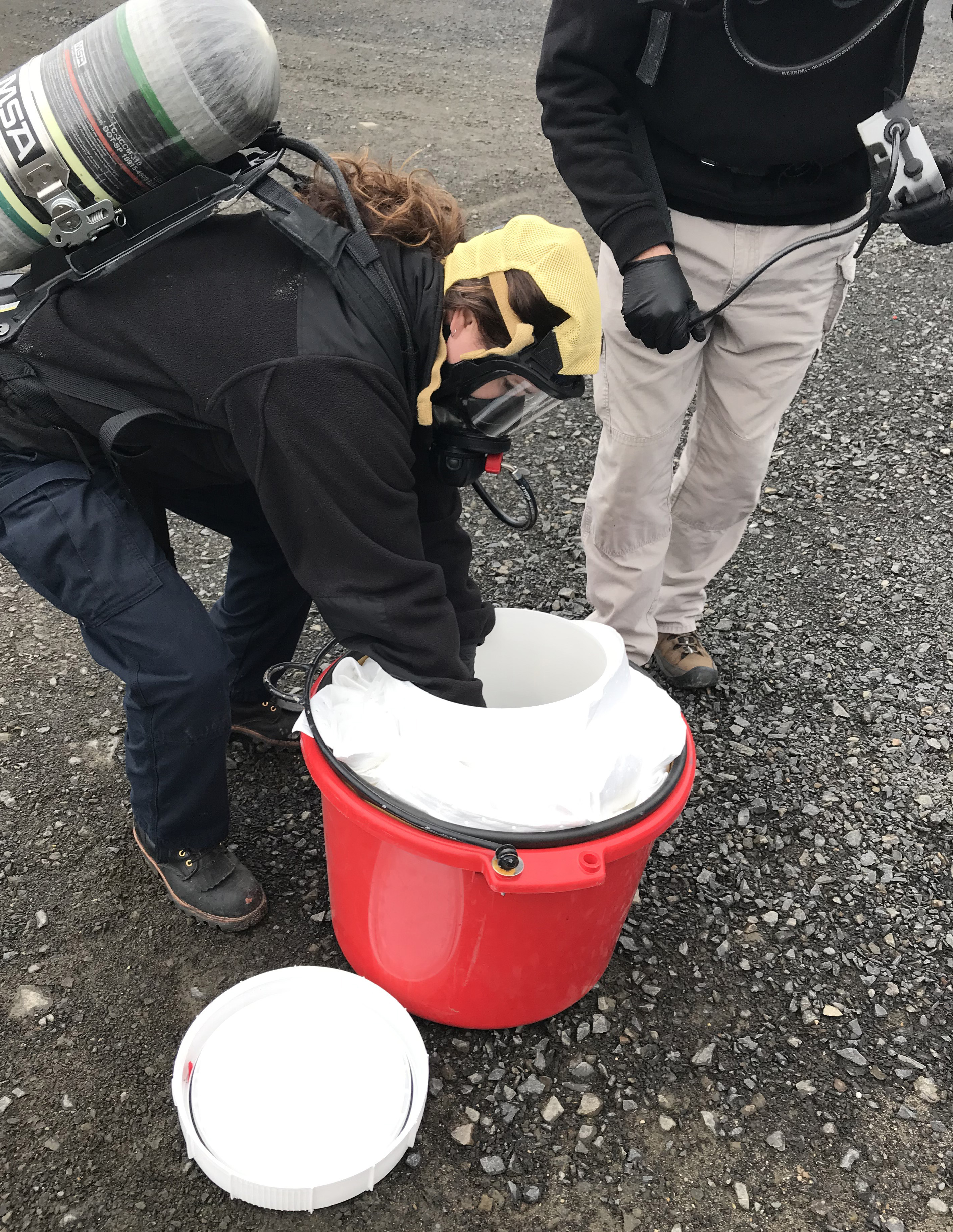
Homeowner finds poisonous theft deterrent in old safe
Our Spill Response program is usually thought of as the team that responds to oil spills across Washington. What people may not know is that they also respond to many other dangerous situations that could harm the environment or threaten human health.
“We remove the hazards from illegal drug manufacturing facilities and we also respond to and identify unknown chemical substances; things like abandoned containers or drums that aren’t labeled, mystery chemicals discovered in homes and schools,” said Spill Response Section Manager Dave Byers. “A lot of what we run across is very toxic … phosphine gas, cyanide, acids, and flammable materials.”
Last Thursday, the Spill Response team got a call from the Kennewick Fire Department. A homeowner had purchased an old safe and found a theft deterrent device inside comprised of three glass vials of a slightly opaque, unknown liquid. Antique devices like these commonly used chloropicrin or phosgene, poison gases first manufactured for chemical warfare during World War I.
The theft deterrent device.
The idea behind the design? Potential safe crackers would break the vials and get a toxic surprise.
Since local hazardous waste collectors wouldn’t take the vials, Spill Response Manager Andy Wilson picked them up for inspection and disposal. When Wilson contacted the National Guard 10th Civil Support Team for assistance, he learned the vials could actually contain highly-volatile nitroglycerin or picric acid. He and the National Guard opted for caution and called the Washington State Patrol bomb squad.
Testing for hazardous chemicals before detonation.
They tested the chemicals, which were identified as Chloropicrin, a gas that can cause severe irritation to the eyes, lungs, and skin. The bomb squad elected to detonate the chemicals to ensure safe disposal.
“Our small but highly-skilled team never knows what we’ll be responding to until we get the call,” said Spill Response Supervisor Sam Hunn. “That’s what makes it fun. But we’re rarely operating alone. We work with our partners in the emergency response community to make sure we finish the job safely and efficiently. In this case, that meant working with partners who have access to explosives.”
While this incident ended in the safe removal and disposal of hazardous chemicals, the outcome could have been very different, depending on the actions of the homeowner. If you come across unknown or unmarked chemicals, don’t just toss them in the trash. Ecology’s Spill Response team can help identify and dispose of them, if necessary. They can be reached anytime by contacting Washington Division of Emergency Management at 1-800-258-5990.
Learn more about Ecology’s Spill Response program.



